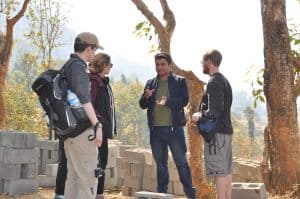Contributed by Maria Grazia Frontoso
At 11:56am on 25 April 2015, Central Nepal was hit by a massive earthquake (7.8 magnitude), causing devastation to many parts of the country. Luckily it happened when many people were not in their houses so the number of casualties was small compared to the number of destroyed or damaged houses.
During the RMS Impact Trek in March 2017 I didn’t expect to see lots of houses still highly damaged neither many people (4 million) still living in temporary shelters.

 Contributed by Paul Lewis
Contributed by Paul Lewis